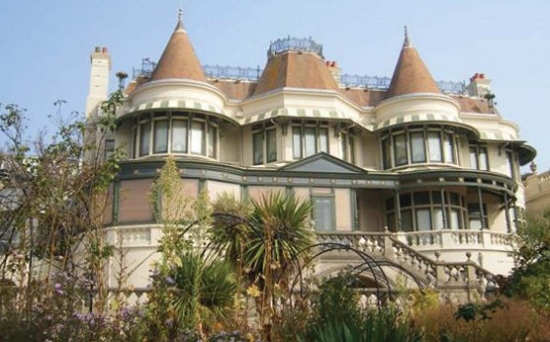
As a child growing up in Wales, I heard a great deal about the English seaside resort of Bournemouth – usually from my father, his brothers and sisters and cousins who had gone on holiday to what was then the favorite watering hole of Jewish folks in Britain – especially if they were looking for a Jewish spouse.
Old black and white, well, more brown and yellow these days, photographs of my father and his brothers strolling down the prom at Bournemouth seventy or so years ago whilst out and about on the mating game helped me decide that a recent holiday in Britain would start with a first ever visit to Bournemouth.
In my Dad's spouse seeking days – my mother died in the polio epidemic of 1950 - Bournemouth was the main 'shiduch' center, not only for the footloose and fancy free but also for widows and widowers seeking second time around suitable partners. In those days the choice of kosher hotels was impressive, as it would seem was the choice of Yiddishe ladies and gents, but these days only one hotel adheres to kashrut
and I didn’t feel a Jewish presence anywhere I went in Bournemouth although there are a number of synagogues and an active Jewish Representative Council.
Three days in Bournemouth and I was smitten. The Victorian period buildings, attractive pier, seemingly endless beach and beautiful gardens – and the fact that the sun shone every day – did the trick. To be walking along the beach with the youngest of my five sabra offspring in the footsteps of the grandfather none of them ever knew, was a powerful experience – much to my surprise also shared by my 26 year-old son who is not normally too interested in walking down the memory lanes of his mum.
Perched high on a cliff overlooking the beach is the Russell-Cotes Art Gallery and Museum. Whilst the lad was out running to his heart’s content along the cliff tops, I visited one of the last Victorian buildings ever built. Plans for the building, known as East Cliff Hall, were drawn up in 1897 and completed in 1901. It was owned by Sir Merton and Lady Russell-Cotes, avid travelers and dedicated collectors of art, furniture, silverware and a multitude of other artifacts ending up with a private house cum museum.
Entering the rooms of the Russell-Cotes Art Gallery and Museum one almost feels one has entered a time machine and unlike many museums full of similar items, this museum was a private house and it was possible to imagine the family showing friends around and sharing with them their escapades in far flung places few of their guests ever got to visit in those times.
The ceilings, walls, wooden and tiled floorings are eyecatching in themselves. The ladies’ toilet was probably the most interesting, colorful and attractive I have ever paid 'a visit' to and found it difficult to leave actually. The floor, wall and ceiling tiles were breathtaking as were the stained glass windows and woodwork. I certainly cannot remember taking out my camera anywhere else over the years to snap a public toilet, but spent more than a few minutes doing just that in this particular loo.
Elsewhere in the house, a Moorish alcove is based upon designs from the Alhambra, visited by the Russell-Cotes in 1910. A quotation from the Koran reading, "There is no conqueror but God," is etched on the lip of the alcove dome, in itself a real work of art fashioned from colorful glass. Rays of sunshine pour through in to the alcove making it seem almost magical.
Sir Russell-Cotes gave East Cliff Hall to the people of Bournemouth in 1908, and in the Bournemouth Directory of 1907 it was declared to be as being 'quite unique' as a house adapted as an Art Gallery and Museum.
I hope my dad got to visit the Russell-Cotes Art Gallery and Museum in his Bournemouth days. A furniture salesman by trade I'm sure he would have more than appreciated the vast collection of armchairs, chairs, tables and even bookshelves, among the items this Victorian couple purchased and brought back to Britain during their Victorian days of globetrotting.
As far as I know, Bournemouth was the furthest my father ever traveled out of Wales. For him it was almost like going abroad. Well, it was England after all!
Photos: Wing of the Russell-Cotes Art Gallery and Museum
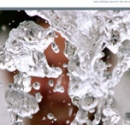 DEAR EDITOR 153
DEAR EDITOR 153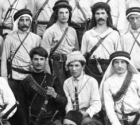 REVISITING THE PAST BETH HASHOMER
REVISITING THE PAST BETH HASHOMER BIBLICAL ZOOS & ANIMAL RESERVES IN ISRAEL
BIBLICAL ZOOS & ANIMAL RESERVES IN ISRAEL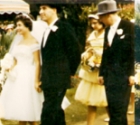 Bridesmaid recalls a very special day 59 years ago
Bridesmaid recalls a very special day 59 years ago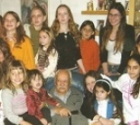 Harry Berman
Harry Berman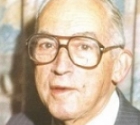 Sam Levin
Sam Levin Lydia Aisenberg
Lydia Aisenberg